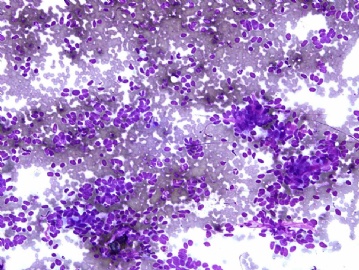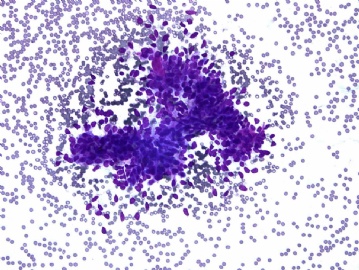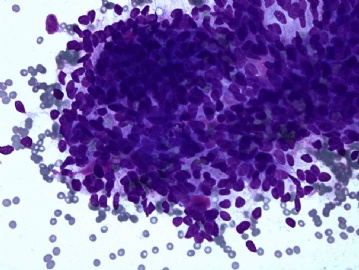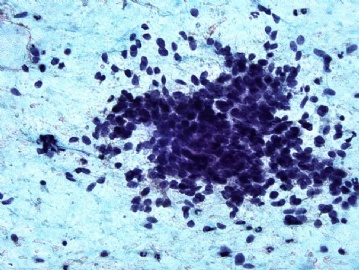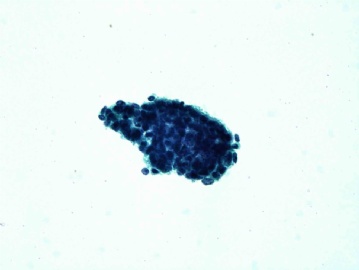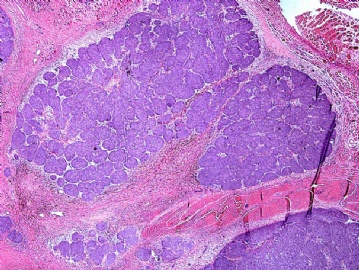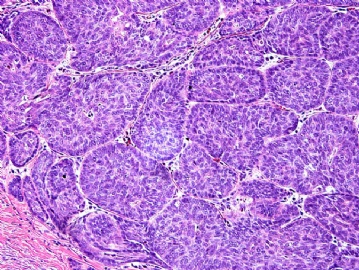| 图片: | |
|---|---|
| 名称: | |
| 描述: | |
- Parotid FNA
-
I think that people are in the right direction. I have said this many times here that if a salivary gland tumor lacks chondroid-myxoid stroma, I would not call this "pleomorphic adenoma" (PA) on cytology, even if by statistics, it might well be PA, thoes so called "cellular pleomorphic adenoma". I have the surgical resection of this tumor and it again teaches me that the category of the epithelial/myoepithelial tumor of the salivary gland includes a broad differential diagnosis. Anyone want to guess what the final pathology will be?
-
OK! 在陈老师的鼓励下,我大胆提几个!
| 以下是引用陈隆文博士在2009-10-24 0:03:00的发言: I think that people are in the right direction. I have said this many times here that if a salivary gland tumor lacks chondroid-myxoid stroma, I would not call this "pleomorphic adenoma" (PA) on cytology, even if by statistics, it might well be PA, thoes so called "cellular pleomorphic adenoma". I have the surgical resection of this tumor and it again teaches me that the category of the epithelial/myoepithelial tumor of the salivary gland includes a broad differential diagnosis. Anyone want to guess what the final pathology will be? |
这个肿瘤良性的可能性大。不是基底细胞腺瘤就是多形性腺瘤。
也有难说的,毕竟穿刺针路经的区域有限。
顺便提一个建议,想请陈博士尽可能用中文表述。这样,广大基层网友可能阅读起来更加便捷,更加欢迎。如有不便,那就劳驾翻译团队了。谢谢!

- 王军臣
Thank you for all the discussion. Urbino: your comments are well-done. The final pathology for this case is Basal cell adenocarcinoma, I put 3 photos of the final H&E, the first one clearly show the invasion of the muscle, the third one shows necrosis and increased mitoses.
This case the cytology is signed out by me as "atypical cells derived from a low-grade salivary gland epithelial/myoepithelial neoplasm", using this terminology, our Head&Neck surgeons know exactly what to do (surgical excision). Because most of the primary salivary gland tumors need to be removed anyway. You don't need to say wrong diagnosis on cytology to make yourself look bad. A general terminology is recommended in salivary gland FNA when the cytology is NOT typical of a specific neoplasm. On the other hand, if the cytology is perfect for a specific neoplasm, I will say so in the diagnosis.
-
翻译一下陈老师的点评:
